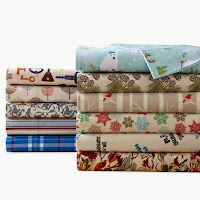18 Ways to Save on Heating this Winter
With soaring power bills, heating in winter is fast
becoming a luxury. In cities like Sydney or Melbourne where winter low
temperature hovers at just above freezing, room heating can become an optional
extra. It is also very unlikely that pipes will freeze in winter in Sydney.
By learning a little about Thermodynamics you can learn the science behind saving on heating bills this winter. For more about related Thermodynamics, click here.
Quick Fixes
Thermodynamics: Insulation
By changing your summer cotton bed sheets to flannel or microfiber, you will find yourself much warmer. Also, consider instead of using a four-season or synthetic quilt, to use a heavy wool or a down and feather quilt. The higher the percentage of down in the quilt, the warmer it will be.
By changing your summer cotton bed sheets to flannel or microfiber, you will find yourself much warmer. Also, consider instead of using a four-season or synthetic quilt, to use a heavy wool or a down and feather quilt. The higher the percentage of down in the quilt, the warmer it will be.
2. Wear flannel pyjamas.
Thermodynamics: Insulation
By wearing long sleeved flannel pyjamas to bed, you will be keeping pretty warm. If you are lounging around before bed, you can always top this off with a warm dressing gown. Or if you are on a low budget, there’s nothing stopping you from wearing your coat at home.
By wearing long sleeved flannel pyjamas to bed, you will be keeping pretty warm. If you are lounging around before bed, you can always top this off with a warm dressing gown. Or if you are on a low budget, there’s nothing stopping you from wearing your coat at home.
3. Try bed socks
and a sleeping cap.
 |
| Bed Socks (Source: Amazon.com) |
I do admit this is not for everyone. I really hate wearing socks and the thought of wearing it to bed puts me off. However, bed socks will keep your feet from freezing in those cold mornings. Also, as about 10% of heat loss is through your head when you are sleeping, unless you are totally under your blanket, for most of us, our heads are the only thing not covered as we sleep. Consider, particularly for those very cold mornings to use a sleeping cap. It will keep you snugly warm!
4. Use a hot water bottle.
Thermodynamics: Radiation
Hot water bottles are one of the lowest cost of heating. The most commonly found is a rubber 2-litre water bottle. You can put one under your quilt just before you go to bed, or put it at end of your quilt to warm your feet. Just a few tips when using one:
Hot water bottles are one of the lowest cost of heating. The most commonly found is a rubber 2-litre water bottle. You can put one under your quilt just before you go to bed, or put it at end of your quilt to warm your feet. Just a few tips when using one:
·
When buying one, check the manufacture date on
the bottle by checking the Daisy Wheel (as in picture). Don’t buy it if it is more than 3 years old. If it is faded, don’t
buy it.
·
Always use a knitted cover or a towel around it.
This will keep it warmer for longer and keep you from not getting burns.
·
Never use boiling water.
·
Make sure there are no leaks before each use.
·
Never sit or lay on it.
·
Replace every 1 – 2 years, or when tears or
cracks appear, or when the material is brittle, faded or worn.
·
When not it use, keep it open and upside down.
A safer alternative to a hot water bottle would be a
wheat bag. Wheat bags are convenient as they can be quickly heated in the microwave.
Wheat bags come with different fillings including wheat, uncooked rice, feed corn, buckwheat hulls, barley, oatmeal, beans, flax seed or cherry
pits. Wheat bags are a relatively easy DIY project which can be completed in an
evening.
6. Take a shower
before going to bed.
Thermodynamics: 1st Law
Thermodynamics: 1st Law
Save your showers to just before you go to bed. That way
you are warm and snug when you do. Alternatively, you can soak your feet in a
tub of hot water.
7. Drawing back your blinds and curtains in the day, and
shutting them at night fall.
Thermodynamics: Radiation, Insulation
 |
| Curtain with Thermal Lining (Source: Aliexpress) |
One amazing part of the Australian winter is that day
time temperatures are relatively high and sitting in the sunshine can be
amazingly warm. You can harness that warmth by drawing your blinds and curtains
back particularly the East facing in the morning and the West facing in the
afternoon. However, do remember to shut them when night falls as heat is then
loss the other way around.
8. Wear an extra
layer, even at home
Thermodynamics: Insulation
Thermodynamics: Insulation
Wearing an extra layer doesn’t mean you would look super
bulky or feel weighed down. It could be as simple as wearing a thermal singlet
or thermal long sleeved t-shirt. I personally like the Uniqlo Heat Tech. An
alternative is a down vest of coat which are incredibly light but warm. For
knits, natural fibres such as wool are significantly warmer than artificial
fibres.
9. Only heat the room you need.
Thermodynamics: 1st Law
Thermodynamics: 1st Law
This seems like a no-brainer. But think of it, how often have we left the heater on in another room which we aren't using? Also, close the door to the room you are using. That way, you will minimise heat loss to another room which you are't using.
10. If you have a thermostat to your heater, reduce it by even by 1-2'C.
NSW government recommends winter optimum thermostat setting at around 18-20'C. Every degree above that will increase your heating cost by 10-15%.
11. Switch off your electric blanket and turn down the thermostat of your heater before bed.
Thermodynamics: Insulation
In bed, you with your wheat bag and warm quilt you will be snugly warm. You can then further reduce your heater thermostat and switch off your electric blanket. This will also keep you safe from electrical fires particularly from electric blankets at night.
12. Leave your oven open and bathroom door open after use.
Thermodynamics: Convection
By leaving your oven or bathroom door open after use you will allow better convection of heat into the space it is immediately open to.
13. If you have a ceiling fan with a reverse direction function, use it when using a heater.
Thermodynamics: Convection
By using a ceiling fan in reverse direction when using a heater, you will increase the convection of heat. That way, your room will be heated more evenly. This will also ensure the whole room is closer to thermostat temperature.
10. If you have a thermostat to your heater, reduce it by even by 1-2'C.
NSW government recommends winter optimum thermostat setting at around 18-20'C. Every degree above that will increase your heating cost by 10-15%.
11. Switch off your electric blanket and turn down the thermostat of your heater before bed.
Thermodynamics: Insulation
In bed, you with your wheat bag and warm quilt you will be snugly warm. You can then further reduce your heater thermostat and switch off your electric blanket. This will also keep you safe from electrical fires particularly from electric blankets at night.
12. Leave your oven open and bathroom door open after use.
 |
| (Source: Imgarcade) |
By leaving your oven or bathroom door open after use you will allow better convection of heat into the space it is immediately open to.
13. If you have a ceiling fan with a reverse direction function, use it when using a heater.
Thermodynamics: Convection
By using a ceiling fan in reverse direction when using a heater, you will increase the convection of heat. That way, your room will be heated more evenly. This will also ensure the whole room is closer to thermostat temperature.
Long Term
Solutions
14. Consider changing your
curtains to one with thermal lining.
Thermodynamics: Insulation, 1st Law
Thermodynamics: Insulation, 1st Law
Curtains with thermal lining will minimise heat loss
particularly at night. An alternative to changing your curtain, particularly if
it is a decorative one, is to use a double track curtain rail and have a
thermal lined curtain inside.
15. Consider adding
insulation to your walls and roof and double glaze your windows.
Thermodynamics: Insulation, 1st Law
Thermodynamics: Insulation, 1st Law
 |
| Wall Insulation (Source: Oak Ridge National Lab) |
If you have a house, you might like to add insulation to
your roof. As heat rises, a good amount of heat is lost through your roof. If
you are able to as well, insulate your walls and double glaze your windows. If
you don’t already own a home, these features might be a good plus point when
you go house hunting.
16. If your doors and windows don’t seal well, work on
the sealing.
Thermodynamics: Insulation, 1st Law
Thermodynamics: Insulation, 1st Law
Up to 25% of heat is loss through poorly sealed doors and window. This could be as easy as getting a "door snake" to block off heat loss from under your door, or changing the weatherstripping. However, heat can be loss throughout the frame of doors and windows if not sealed well. If you need help, there's plenty of DIYs online or head to your local hardware shop to seek advice.
17. If you have wooden floorboards
or tiles, consider using a rug.
Thermodynamics: Insulation, 1st Law
Tiles are a great addition to the house as it is very easy to clean. However, in winter, this could make your floor icy and terrible to walk on. If you have tiles, consider using a floor rug or runners. They can add amazing colour to your home as well. For bathrooms, you can choose to use a high more fluffy rug to increase warmth.
 |
| (Source: Homedit) |
Tiles are a great addition to the house as it is very easy to clean. However, in winter, this could make your floor icy and terrible to walk on. If you have tiles, consider using a floor rug or runners. They can add amazing colour to your home as well. For bathrooms, you can choose to use a high more fluffy rug to increase warmth.
18. If you must use a heater in a large area,
consider using natural gas rather than electricity.
Natural gas heater are cheaper to run as compared to electricity. They are particularly more effective in heating larger rooms as well.
How to Seal Under and Around Your Doors and Windows, Victoria Government
Reducing your Energy Cost, NSW GovernmentChoosing Between Electricity, Gas and Solar, Australian Government
Related Posts
Saving Heating Bills by Learning to Apply Thermodynamics
To subscribe to my blog, please Like on our Facebook page.
To support my blog, please click on one of my sponsor's advertised links :)
Saving Heating Bills by Learning to Apply Thermodynamics
To subscribe to my blog, please Like on our Facebook page.
To support my blog, please click on one of my sponsor's advertised links :)






This blog is very Informative! Thank you.
ReplyDeletePlease visit Plumbing companies Bunbury